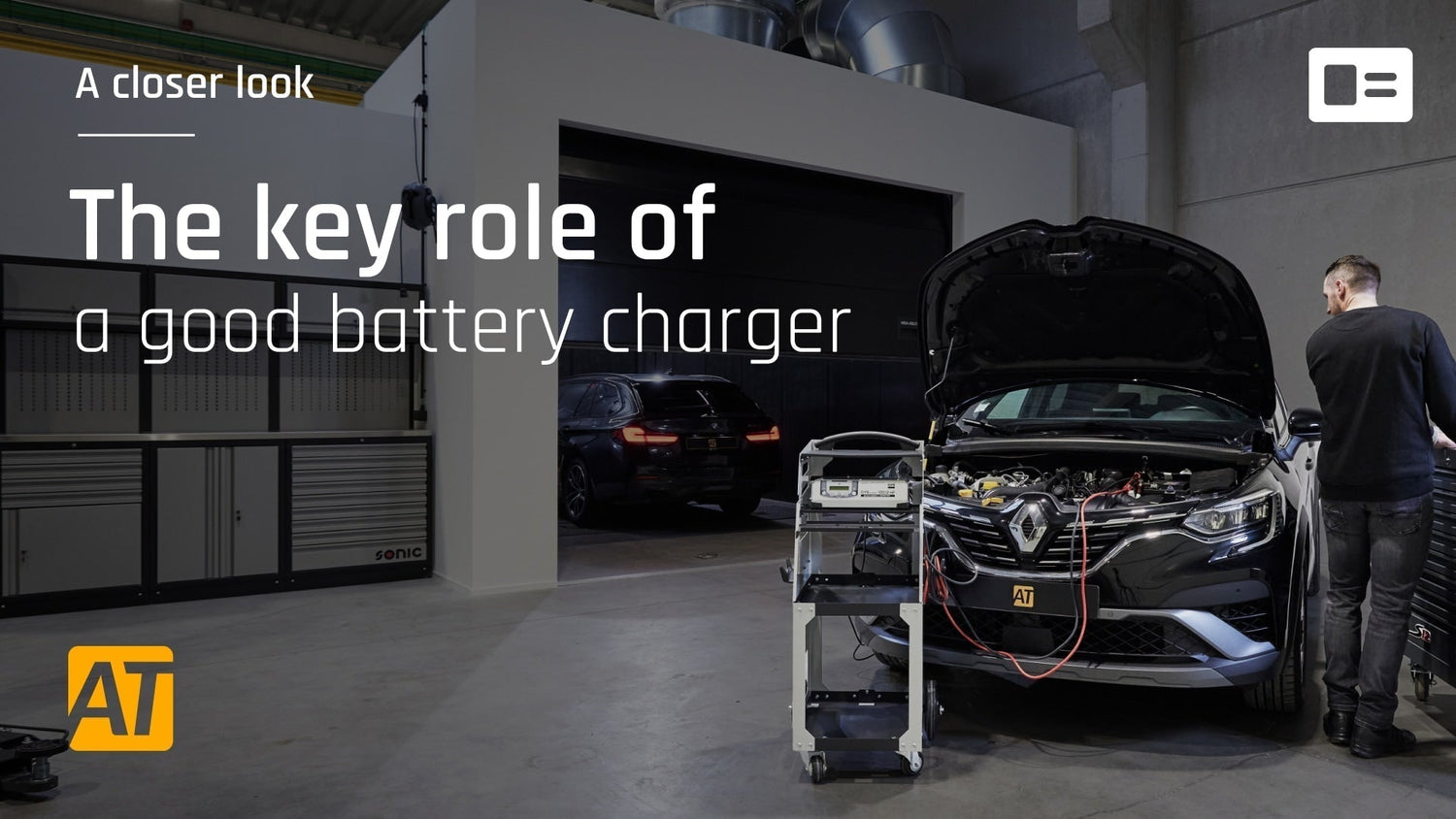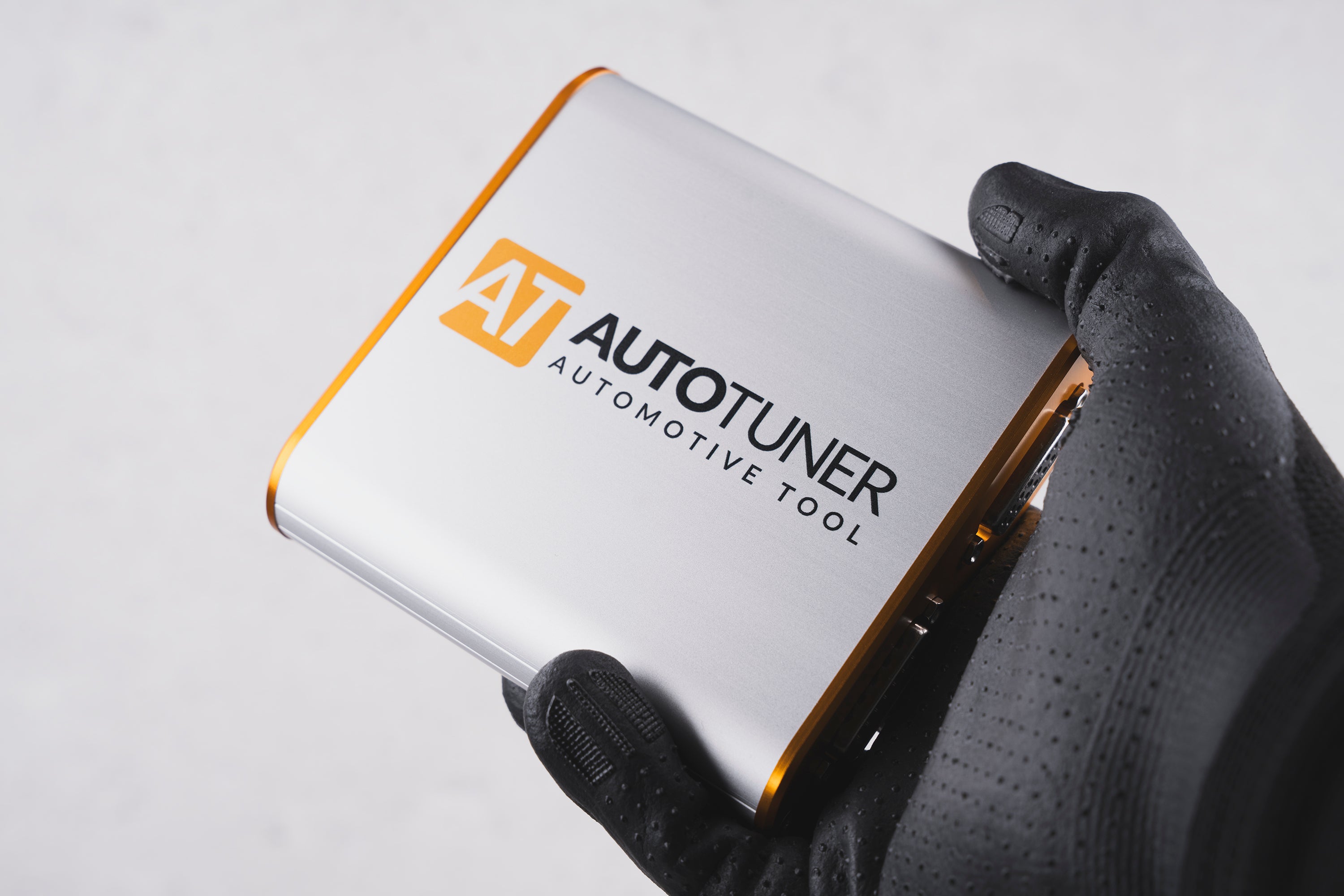As a professional, you’ve probably already had to deal with a battery problem when reprogramming a vehicle. While you’d think that a car battery would be robust enough to withstand a reprogramming session, unfortunately, that isn’t always the case.
On most cars, the nominal voltage of the battery is between 12.4 and 12.7 volts. However, there are different types of battery, such as:
Lead-acid batteries: These are the traditional car batteries, which use a liquid electrolyte based on sulphuric acid and water. Though reliable and affordable, they are heavy and have a limited lifespan compared with more recent technologies.
AGM (Absorbent Glass Mat) batteries: AGM batteries are also lead-acid batteries, but they use absorbent glass mat separation technology to retain the electrolyte. They are lighter than traditional batteries and better able to withstand deep discharges. They are often found in top-of-the-range vehicles and start-stop systems.
Gel battery: Gel batteries are a variant of lead-acid batteries which use a gel electrolyte rather than a liquid electrolyte. They are waterproof, resistant to vibration and extreme temperatures, and common in leisure and off-road vehicles.
Lithium-ion battery: Lithium-ion batteries are becoming increasingly popular in modern top-range vehicles because of their light weight and ability to deliver high levels of power. They are frequently found in sports cars such as the Porsche 992 GT3. However, it should be noted that these batteries are sensitive to the cold and require regular charging via a battery stabiliser if the vehicle isn’t used frequently.
It’s often difficult to determine the type and condition of the battery because battery age and vehicle usage are influential factors. Consequently, a powerful battery charger is a must to compensate for the lack of power during the reprogramming process.
Power consumption
When you activate a vehicle, the dome light comes on and some entertainment system functions start. These generally don’t have a significant impact on battery consumption, and the entertainment systems turn off quickly if the vehicle isn’t switched on. However, when the vehicle is actually switched on, all the systems and ECUs go on, preparing the car to start. This is when the battery is put under heavy strain and a considerable amount of energy is consumed.
Such consumption peaks gradually lead to a reduction in battery voltage, which can fall below 12 volts. Please note that the many ECUs in the vehicle operate at 12 volts or more. Some ECUs (e.g. the ME2.8 ECU) even require a voltage of more than 12.5 volts to be reprogrammed. The manufacturer’s specifications often indicate that a voltage of 13 volts is required for reprogramming – a detail which should not be overlooked.
Choosing your charger
There are many battery chargers on the market, spanning a wide price range. This can make choosing a charger difficult! Understanding the importance of a powerful charger, which is measured mainly in terms of current (expressed in amperes, or “A”) for a given voltage (expressed in volts, or “V”), is crucial. The more energy consumers in the vehicle and the more power required (expressed in watts, or “W”), the more current will be needed from the battery. Sometimes, over 80A are required.
Bearing this in mind, we recommend the 100-12 HF version of the GYS charger. In its “diagnostic” mode, it’s one of the few chargers capable of delivering up to 100A of current at a voltage of up to 14 volts. You’d be surprised at how efficient it is, especially if you leave accessories such as the headlights or air conditioning on.
What’s more, the GYS 100-12 HF charger offers several modes, including a charge-hold mode that can be useful when you leave the headlights or dome light on during an exhibition or trade show.
Although the initial cost of a powerful charger like the GYS 100 may seem high at first sight, it’s certainly worth the investment. We strongly advise against opting for a charger of less than 100A, because it won’t be able to meet your tuning requirements. Considering the cost of a damaged ECU and the vehicle downtime if the reprogramming process is interrupted due to lack of power, it becomes clear that a GYS charger quickly pays for itself.






